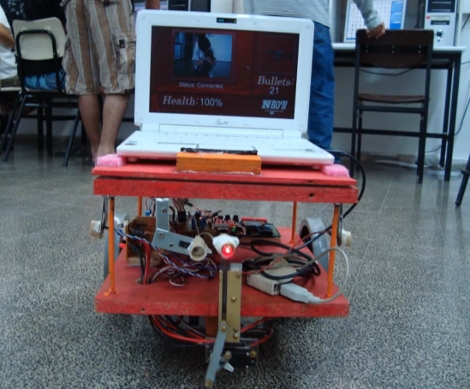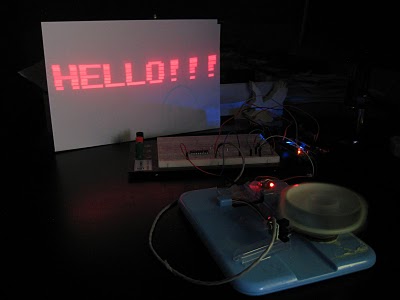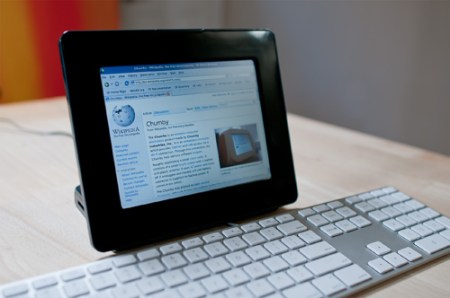
[Shay] and his friend built some battling robots for a school project. Instead of destroying each other’s robots with saws or torches, they are playing laser tag. Each robot sports an eeePC, a laser pointer on a movable arm, and some photoresistors. The goal is to get your laser to hit the other robot’s photoresistor to lower its health towards a kill. A server keeps track of the bout, monitoring shot fired because you won’t find unlimited ammo in this game. As for piloting the rig, the netbook webcam is streamed to a control station with an Xbox 360 controller for motion, aiming, and firing. Check it out after the break.














